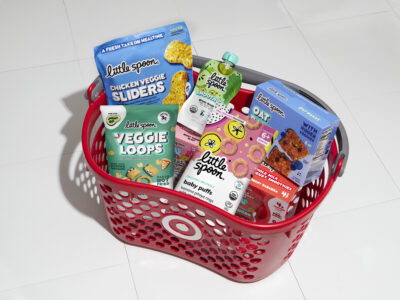Another dinner plate on the floor…and now your little one is off running to play instead of staying at the table through dinner. Sound familiar? As an occupational therapist, when I see a child for a feeding therapy evaluation, the first of many things that I look at is positioning. This is one piece of the picky eating puzzle that is easily overlooked, but it can be an important key in making your child a successful eater!
If you’re dealing with stressful mealtimes, there are a few signs that poor positioning could be a culprit:
- Only tolerating sitting at the table for a few minutes at a time, or crying right when they get in the chair
- Rounded back while sitting, and having to lean forward to reach the table or tray for each bite
- Slouching to the side, propping on the table or chair with one arm while using the other for self-feeding
- Head banging against the back of the chair or highchair
- Kicking feet on chair or table throughout the meal
- Their legs are wrapped around the legs of the chair (kids and adults often do this to increase stability)
- Constantly having to give reminders for your child to “sit up tall!”
If you notice any of these things, take a look at these tips for making sure your child has a chair that sets them up for success at meals:
1. Sit at the same level as the rest of the family
No matter the age or skill level of your eater, they greatly benefit from sitting at the table with you. When they join you at the table, they will watch you eat, see how you use utensils, and observe you serving yourself and trying new foods. Try and make that highchair face the table in the same way that a regular chair would be at the table.
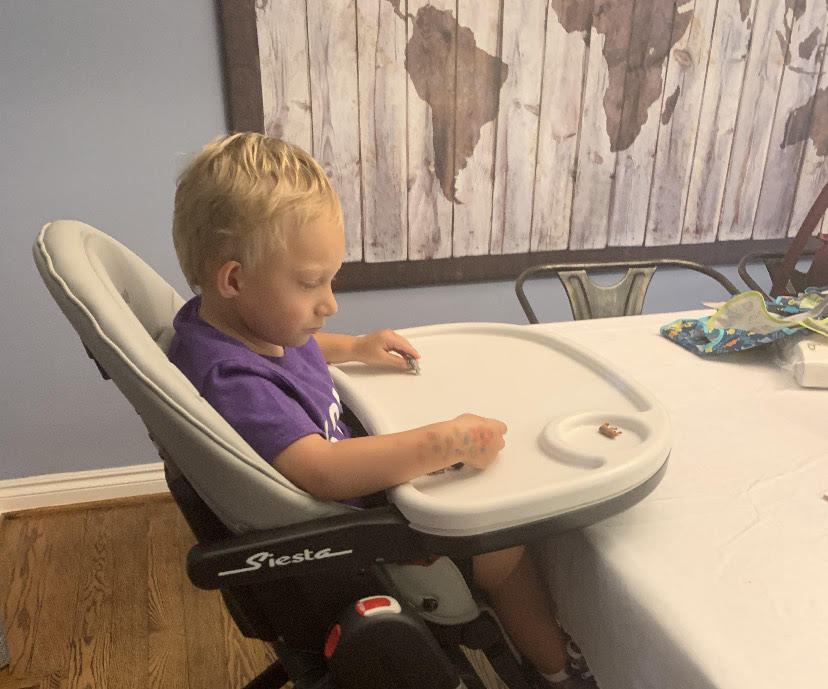
This is Noah, in his supportive chair, pushed up to the table, waiting for the rest of his family to join him for dinner.
Your toddler may love to sit at their own mini-sized table in front of the TV, but if you notice picky eating behaviors or decreased ability to sit through a meal with the family, you may want to consider slowly starting to bring them back to join you at the table (easier said than done, I know!). This will increase their exposure to all of the foods you are eating and make them more familiar with a variety of food. Eating at the same time as your baby or toddler can seem like an impossible juggling act, but if a full dinner isn’t an option, aim for a few bites of a snack (bonus points if you are eating the same thing as they are!) at the same time that they are devouring their favorite Little Spoon Babyblend or Plate.
Exposure and sitting at the table is important regardless if your child is fed orally or fed via gastrostomy tube. For children who get their nutrition via g-tube, sitting with the family during meals can provide an opportunity for sensory play as well as associating mealtimes with being full.
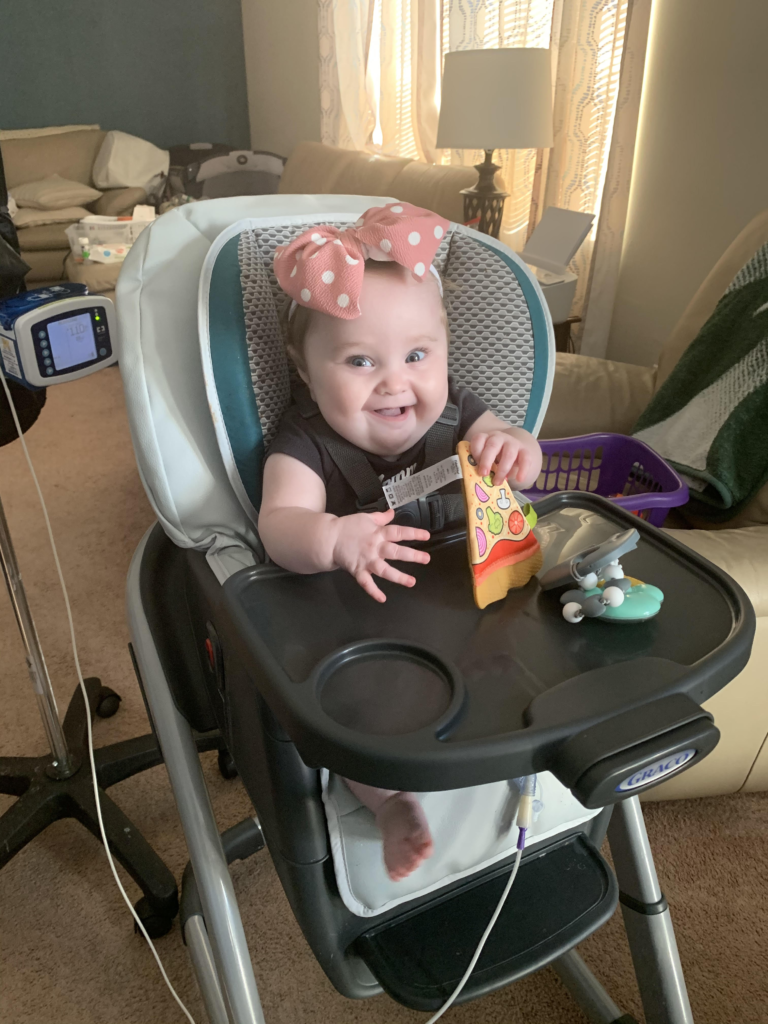
This is Sharon, learning to sit in her highchair while she is being fed via g-tube.
2. Support the back and hips
Eating is a LOT of (hopefully fun) work for babies and toddlers. We want to make sure that they do not need to do extra work to keep their body upright. By supporting their trunk and hips, they can fully focus on moving and coordinating their oral motor muscles.
For babies, you can use rolled up towels on either side of them in their highchair to increase support. If you see that your baby needs to lean forward by crunching their abs to retrieve a bite, you can support them with a towel behind their back to bring them closer to their tray.
For toddlers, make sure that they have back support in their chair! If they are in a standard kitchen chair, you can add a booster seat or place a firm pillow or towels behind their back that they can lean against. Having a supportive seat can decrease the wiggles and could increase the amount of time that they will sit for a meal before running off to play! Your goal is for their hips to bend at 90 degrees in their chair.
3. Tray or Table: Not too high, not too low
The tray or table should land somewhere between your child’s belly button and mid-chest. They should comfortably be able to rest their elbows on their tray or table. Too high makes it hard to reach and self-feed, and too low makes it hard to maintain that nice upright position.
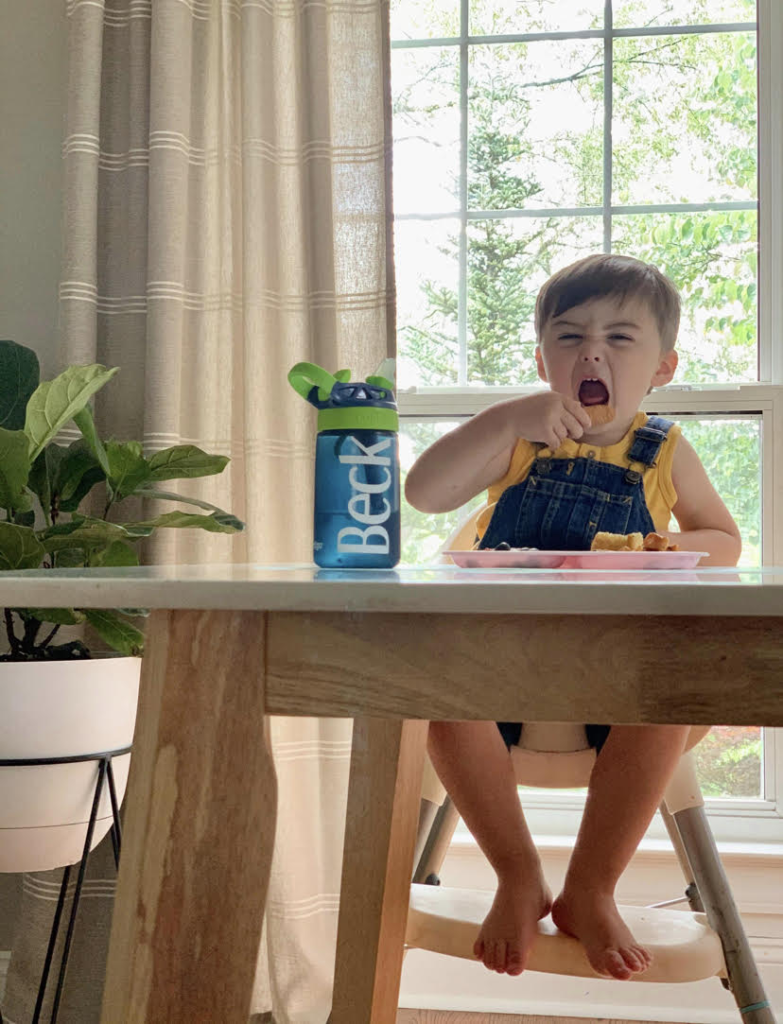
This is Beck, he has been able to gradually increase the amount of time he spends at the table when provided with supportive seating.
4. Feet help you eat
Make sure that those feet are on a stable surface and not dangling. This will increase stability and decrease the amount of work that your child has to do to stay upright. Not many highchairs come with the footrest at the right spot for every child. You may have to get creative here. Notice how this baby has his toes curled? He is trying to gain stability to stay upright throughout the meal. After duct taping a pool noodle to his chair, he can now rest his feet and focus on learning how to use his mouth instead of kicking his legs. His feet look much more relaxed in the second picture. For an older child, you can use boxes or another creative solution to add foot support.

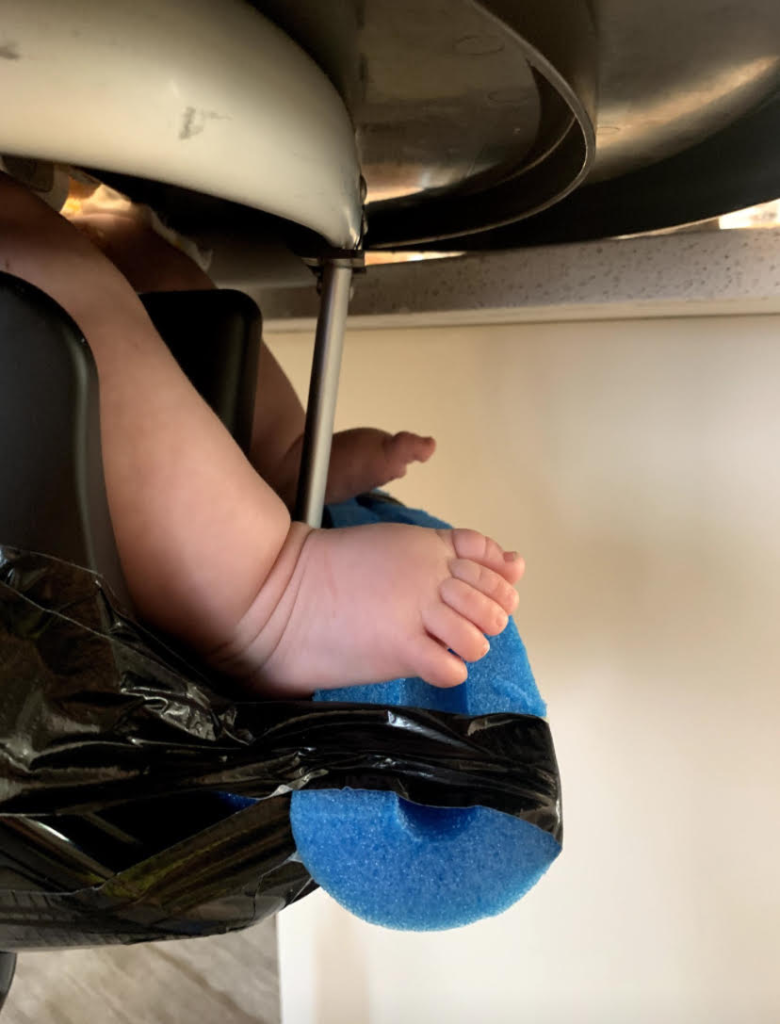
When thinking about positioning and eating, it is easiest to imagine yourself sitting in the same position and with the same supports as your child. Would you be comfortable and supported enough to sit there for an entire meal? I know that when I am at a high top table at a restaurant, sitting on a barstool with no backrest and my feet are dangling, I am so uncomfortable. Having the knowledge of the importance of providing a comfortable, supportive seat can help you provide the best foundation to your child’s eating skills!



